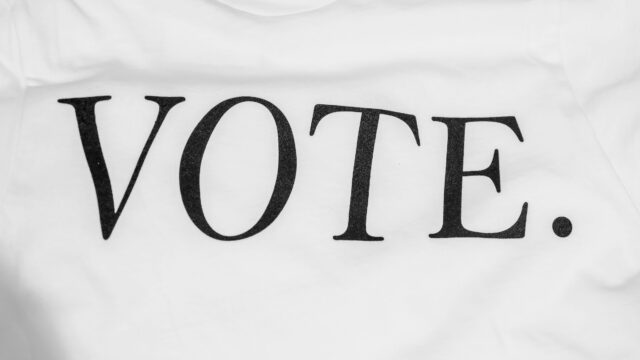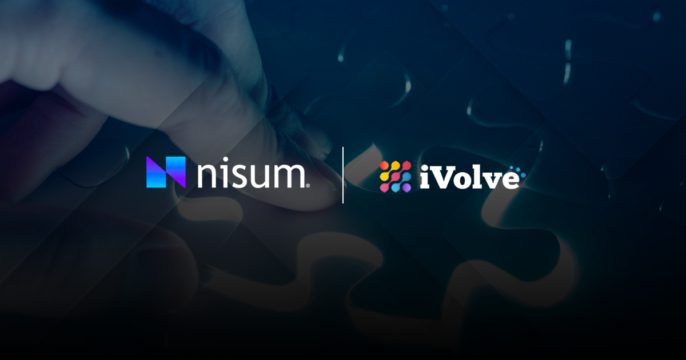When was the last time you bought a newspaper? Maybe on an indulgently slow Sunday when your cup of tea was considered best complimented by a broadsheet, or before taking a flight, or train journey when you knew there might not be wifi. Rewind more than 20 years, and this would have been a daily expenditure for most of us.
The way which people consume news and media has totally changed since the internet blew the mainstream media’s revenue model out of the water, and convinced a new generation of consumers that news is a resource which should be free. In a 2005 New York Times article Why You Should Pay to Read This Newspaper? David Carr laments the changing attitude of consumers towards paying for high-quality news content, correlating the rise in free news, with an overall lowering of high-quality journalism.
Fast forward to 2018, and we find a new generation of robust news organizations which have somehow managed to survive more than two decades of media downturn. However, it has not been without a cost. Even the world’s largest media giants have had to dramatically cut newsroom employment, and have been forced to try and keep their heads above water with a range of new monetization tactics, some which have been more unpopular with readers than others.
Struggling to pay staff, many have resorted to newer or hybrid models that aim to keep the media ship afloat. But which will allow publications to remain truly independent? And will journalism change irrevocably as a result?
The billionaire backer model
Billionaire media moguls are nothing new. From William Hearst’s towering persona which was both portrayed and satirized in the film Citizen Kane, to the real-life Rupert Murdoch of today.
And while many are not owned outright by one person, legacy brands like the New York Times, The Atlantic, The Washington Post, and Bloomberg, all of which have powerful billionaire backers too.
Last month, Time Magazine entered the Billionaires club, when Salesforce owner Marc Benioff and his wife Lynne acquired the publication for $190 million. But while Time staff were reportedly supportive of the acquisition, the risks of this model are that the newsroom still remains very much dependent on the large part of their income on a single source.
And although patrons have publicly stated that they won’t be part of editorial decisions, their power over the newsroom may concern many. While newspapers might not just become PR machines for their billionaire backers, they are unlikely to openly criticize them.
Take The Washington Post which recently covered Amazon’s recent salary hike as “unequivocally positive news”, despite the fact that many other newspapers had been quick to criticize Jeff Bezos — owner of the both Amazon and The Washington Post — for paying staff so little in the first place.
However, one could argue that newspapers have always towed some form of party line for wealthy backers and that if anything, billionaire backers who have cut their teeth in different industries are more likely to treat media companies as a business, rather than a loudspeaker.
While editors who value their jobs might sway away from biting the hand which feeds them, one can only hope that veterans from within the media industry will take measures to ensure that the line of journalistic values is not crossed just to appease wealthy backers.
From subscriptions to donors
A hefty chunk of news organizations incomes used to come from those who subscribed to their newspaper. Back when print newspapers were the dominant way in which people consumed news, print newspapers had a competitive edge in that many wanted to have their local daily delivered to them at home, and thus signed up to annual subscriptions.
That is no longer the case. Although digital subscriptions have gone up, Pew Research notes that circulation is going nowhere but down, and advertising revenues along with it. Weekday circulation in the US fell 8 percent in 2016 according to the research and the Sunday circulation faced a similar dip. This corresponded to the fall in ad revenue as well which was $49 billion in 2016 and, as of 2016, stands at a measly $18 billion overall in the US.
Which is why many have resorted to the paywall or some hybrid paywall/billionaire backer model whereby subscribers are permitted a certain amount of free content and then are required to pay to access more. Some, like the New York Times, have strict limits on the amount of content which can be viewed before a subscription is required, whereas others like The Independent or The Guardian, are more subtle, simply ‘asking for a small favor’ of a donation from readers at the end of articles and via pop-ups.
Arguably, this model would offer the ‘purest’ transition from the golden age of people actually buying physical newspapers to the new age of monetization through other means, as it ensures that the money is coming directly from the consumers rather than other special interest groups.
The jury is still out at the moment on subscription models as to whether mainstream media outlets can actually make enough money to survive through this model, though it does work for more specialized outlets that may offer niche information that people would pay for, like Financial Times for example. However, in directly asking for payment for content, this tactic is above board in terms of transparency.
Acquisitions/partnerships with other media companies
Over the last few years, there have been multiple examples of ‘new media’ companies being acquired by or partnering with larger media companies.
Mashable was sold to Ziff Davis, a leading global digital media company which has a portfolio including PCMag, Speedtest, ExtremeTech, Geek, Toolbox, IGN, AskMen, Offers.com, TechBargains, emedia, and Salesify, in 2017 for roughly $50 million. This was not the first time which Mashable had accepted deals from other media companies, after previously accepting a round of funding of $15 million led by Time Warner’s Turner unit.
Vice has also recieved multiple investments from other media companies, including a $400 million investment from Disney in 2015, and a $250 million investment in 2014 through A&E Networks, a partnership between Disney and Hearst.
Experts suggest these types of stakes have been motivated not only by the bulging budgets offered by larger media giants but also by a widespread move into the world of news content on TV and streaming. As new media companies increasingly move away from a reliance on social media and try to reach their readerships through other mediums, it makes for them to partner with the legacy companies which are already established in this space.
The crypto route
A more unique and tech solution has emerged most recently by way of blockchain technology, which allows people to ‘invest’ in companies by buying tokens, or via cryptocurrencies.
Civil is one recent example that just recently went public, offering newsrooms the option to buy in on cryptocurrency that allegedly increases in value as readers come to engage and trust in their content. This is once again aimed at ensuring consumers–in this case, buyers of Civil tokens–can connect with the news source by rewarding good journalism.
The blockchain buzz even motivated the Wall Street Journal to launch their own cryptocurrency, however, the project was pulled after the sale of just two coins, after Neil Lipschitz, editor for ethics and standards for WSJ, said WSJ Coin raised “ethical questions.”
And while there might be early concerns, media brands raising through selling shares is not unheard of. Considering a number of publications, such as Buzzfeed and Vice, have hinted that they might go public through an IPO in the near future, media brands moving into the world of cryptocurrencies could offer a means for publications to raise from their own readers, in a decentralized manner which would not put the reins into the hands of any single controlling power.
Native advertising
Advertising was the main model for newsroom revenue in the pre-internet age, but given the decline of circulation and growth of social media, advertisers have tended to go their own way of getting their brand out using Facebook, Instagram, and other platforms. As revenues declined, so too have newsrooms with some being scrapped away altogether.
However, over the last couple of years, changes to social media platforms algorythms, and increased saturation of branded ads on social channels, has reduced visibility for brands, forcing them to look at alternative ways to get their news, and stories in front of the right audiences.
Native advertising — when sponsored content is designed to blend in with the rest of the content of the medium — has become an attractive option for brands, and the publications which they are paying to publish the content. The New York Times has done this with their T Brand Studio whereby sponsors fund a particular article that will in some way include the sponsor’s product or service. This type of content is designed so as not to be overtly promotional but instead uses storytelling to paint a brand in a positive light. Whether it be outlining social responsibility efforts of organizations, catching the readers eye with travel or leisure tips embedded with subtle product plugs, or offering helpful tips which readers can use in their day to day lives. This type of advertising offers organizations the means to tell the right stories about themselves, without having to go in for the hard sell.
A whole new industry has been created around this model, with new giants such as Pressboard offering ‘click and pay’ simplicity for brands who want to be featured on leading publications like the WSJ, Verge or Inc Magazine. And this model is certainly profitable for media brands themselves, who are often paid upwards of $20K USD per article. And it’s not only big budget brands and leading media giants like NYT or WSJ who are getting involved. Newer entrants are also entering the field like Espacio Media Incubator which is also opening the door for more cash-strapped startups looking to gain exposure on its portfolio of more than 30 up and coming partner media publications.
To sum up, when speaking of the declining influence of the media, the conversation has often falsely equated a model that hasn’t generated enough income with the ‘death of journalism’. This is a mistake for two reasons. Firstly, for many who choose to enter the world of journalism, it is an activity and way of life, a desire to understand the world and its patterns, in addition to its beauties and its cruelties. Our desire to know and have known will likely persevere in the same way that music has persevered beyond Spotify.
Secondly, good journalism continues to be built around trust, that between the reader and paper and the erosion of that value has to be held sacred for any business model looking to save the media. This requires a sense of transparency from media outlets themselves about how they are monetizing, whether it be a billionaire backer or the crypto-coin being used to fund the newsroom.
At the end of the day, media organizations have managed to survive until today, albeit many by the skin of their teeth. As new technology emerges, and marketing budgets continue to rise for brands around the world, we will likely see new methods of monetization emerge for these publications which hold a privileged position as gatekeepers to millions of consumers around the world. In the same way, as modern marketers are increasingly leaning on a mix of ‘paid, earned, and owned’ media to get their news out there, we will also likely see the modern media continuing to rely on multi-faceted monetization models too.
This article was written by Craig Corbett and Arjun Harindranath.












